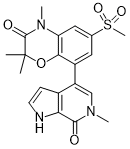A variety of programs and treatments including drug therapeutics, surgical intervention and dietary control for obesity management or prevention have been developed; however, these are often associated with safety issues. Therefore, the development of a safe and effective dietary supplement to assist with body weight management is essential. Lactobacilli and bifidobacteria are representative probiotic microorganisms that benefit human health through modulation of the immune system, prevention of cancer, enhancement of intestinal functions and a hypocholesterolemic effect. Recently, some studies have expended the functionality of probiotics to obesity management. Some probiotics have been demonstrated to have an anti-obesity property by regulating lipid and glucose metabolism, producing conjugated linoleic acid, reducing the adipocyte size and increasing the number of small adipocytes in white adipose tissue, and regulating leptin. Although there was no difference in food and energy intake between the HSD group and BNR17 groups, the increase in body weight was suppressed in the BNR17 groups. There was a significant reduction in subcutaneous and abdominal fat mass in BNR17-fed groups compared to the HSD group. Subcutaneous fat and abdominal fat are the major types of white adipose tissue. Abdominal obesity is associated with increased risk of insulin resistance and cardiovascular diseases, whereas increased subcutaneous fat correlates with a favorable plasma lipid profile. Indeed, the mean adipocyte sizes of all white adipose tissues were remarkably reduced in BNR17-fed mice. Subcutaneous adipocytes are the main source of leptin and adiponectin. Leptin is an adipocyte hormone that controls body weight by regulating food intake and energy expenditure. Leptin concentrations are correlated with the percentage of body fat; higher serum levels have been found in obese individuals compared with non-obese individuals. BNR17 suppressed the elevation of plasma leptin, suggesting that the reductions in fat mass and body weight are associated with a reduction in leptin. Similar effects have been observed in other studies. For the liver, the weight reduction were observed in BNR17 groups, however HE  staining and O-red staining of liver tissue did not show any changes between groups. In this study, glucose was not change between groups. In the paper that investigated the role of fatty acid composition in the development of metabolic disorders in sucrose-induced obeserates, the different time courses of the increases in plasma glucose, insulin, and triglycerides during the course of developing obesity suggest that some time- or tissue-dependent process is necessary to induce these metabolic abnormalities. Some studies have reported that the feeding of a low-protein, high-carbohydrate diet induced an increase in lipid content in the whole carcass, epididymal adipose tissue and retroperitoneal adipose tissue. Long-term feeding of a high-sucrose diet to C57BL/6 mice induced obesity, hepatic steatosis, and insulin resistance. In Asian populations, including Koreans, Chinese and Japanese, the traditional diet is characterized as being high in carbohydrate rather than fat, thus the increasing prevalence of obesity is associated with a high carbohydrate intake. Among Korean adults, a high carbohydrate intake is inversely associated with HDL-cholesterol.
staining and O-red staining of liver tissue did not show any changes between groups. In this study, glucose was not change between groups. In the paper that investigated the role of fatty acid composition in the development of metabolic disorders in sucrose-induced obeserates, the different time courses of the increases in plasma glucose, insulin, and triglycerides during the course of developing obesity suggest that some time- or tissue-dependent process is necessary to induce these metabolic abnormalities. Some studies have reported that the feeding of a low-protein, high-carbohydrate diet induced an increase in lipid content in the whole carcass, epididymal adipose tissue and retroperitoneal adipose tissue. Long-term feeding of a high-sucrose diet to C57BL/6 mice induced obesity, hepatic steatosis, and insulin resistance. In Asian populations, including Koreans, Chinese and Japanese, the traditional diet is characterized as being high in carbohydrate rather than fat, thus the increasing prevalence of obesity is associated with a high carbohydrate intake. Among Korean adults, a high carbohydrate intake is inversely associated with HDL-cholesterol.
Please visit our web site at http://www.tolllikereceptor.com/index.php/2019/02/24/striking-lead-improvement-lv-ef-long-term/ to gain a more in depth knowledge of Reactions argues strongly against its dependence on a single reaction in cells.